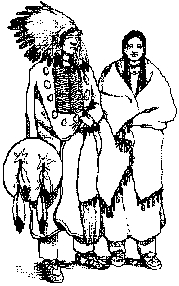

In Myron Angel’s 1883 History of San Luis Obispo County, the author describes
the tumultuous early years of Post-Mexican War San Luis Obispo County. Murders,
Banditry and animosity between the newly arrived Americans and long-established
Californios notwithstanding, the author also describes local raids by bands of
California Indians:
“To add more to this chaotic condition of society, the Tulare Indians made
frequent incursions into this section, driving off from the ranchos bands of
horses, which they killed for their flesh, upon which they mainly subsisted,
preferring it to that of other animals…”
On its face, one might conclude from this statement that an unwarranted native
uprising was taking place. But this would a mistake. In fact, the Tulare Indians
were a group of several distinct tribes [known collectively as Yokuts] that,
like many other tribes throughout California, were fighting for their very
survival in a rapidly changing landscape.
Prior to the Gold Rush and the early years of Statehood, California was the home
to native peoples who had lived upon the land for thousands of years. There were
an estimated 150,000 Indians living in California. By 1870, that number had been
reduced to only about 31,000. This was accomplished through disease, slavery,
and outright deliberate extermination by the newest conquerors of California.
In 1851, California Governor Peter Burnett declared:
“[Unless the Indians are sent east of the Sierras] a War of Extermination
will continue to be waged until the Indian race should become extinct…”
An estimated 60% of the California Indian population was lost to new diseases
introduced to them by the Gold Rush settlers. Bounty’s were also paid on the
Indians. The scalp of a native American brought .25 cents, while a severed head
brought $5.00.
And then there was Slavery. A young Indian boy was worth up to $60.00, while the
price for a young Indian girl could go as high as $200.00.
Besides the aforementioned factors, exploitation of natural resources through
mining, timber-cutting and farming were also placing great pressure on the
native peoples environment. Unlike the white man, they did not view the land as
theirs to exploit as they saw fit. Rather, they chose to live gently upon the
land in harmony with nature.
By November 1856 the last band of Yokuts had been subdued and removed to the
Fresno reservation. There were an estimated 14,000 Yokuts when the California
Gold Rush began. By 1870 less than a thousand remained alive.
It would be convenient to blame the U.S. Army or a few wayward settlers for
these abominable acts, but this would be a great mistake. As contemporary Native
American Historian Jack Forbes writes:
“The bulk of California’s Indians were conquered, and died, in innumerable
little Episodes rather than in large campaigns…it serves to indict not a group
of cruel Leaders, or a few squads of rough soldiers, but in affect, an entire
people, for the Conquest of the Native Californian was above all else a popular,
mass, enterprise.”
The extermination of the native peoples of California came to an end with the
conclusion of the Modoc War of 1872-1873, the last armed resistance by
California Indians. Although perpetrated on a smaller scale, the California Gold
Rush’s impact on the native California peoples was in no way any less a Crime
against Humanity nor any less pardonable than the Holocaust of Nazi Germany.
In the end, perhaps the most poignant expression of the California native
peoples heartfelt desire for peace were spoken by the Great Chief Tenaya, of the
Ah-wah-nee-chee People:
“We do not want anything from the White Men. Our women are able to do our
work. Go then; Let us remain in the Mountains where we were born; Where the
ashes of our Fathers have been given to the Winds.”